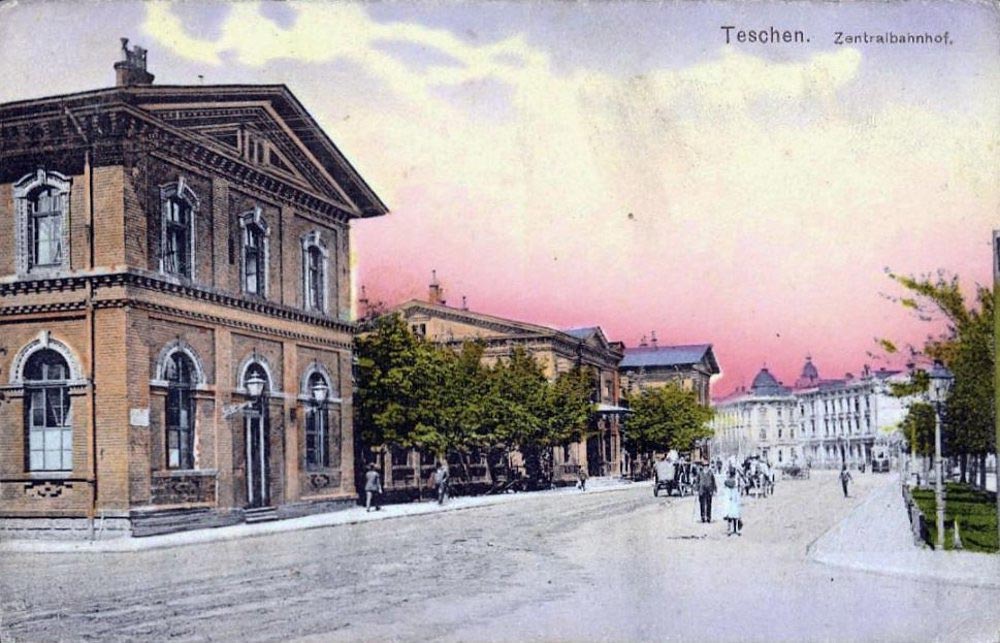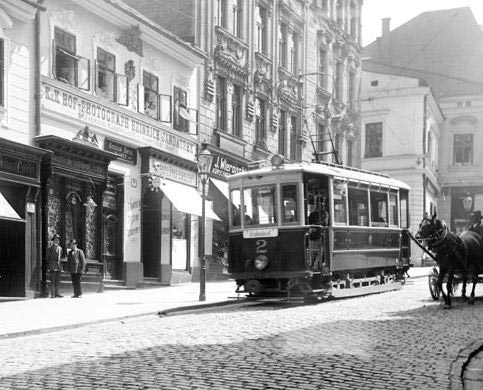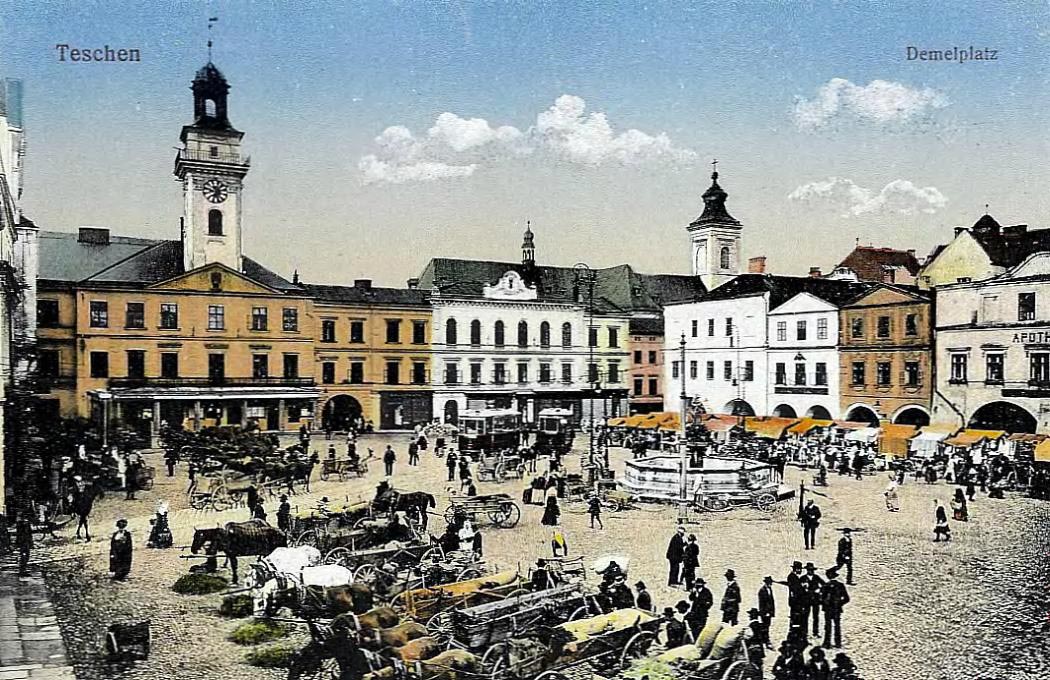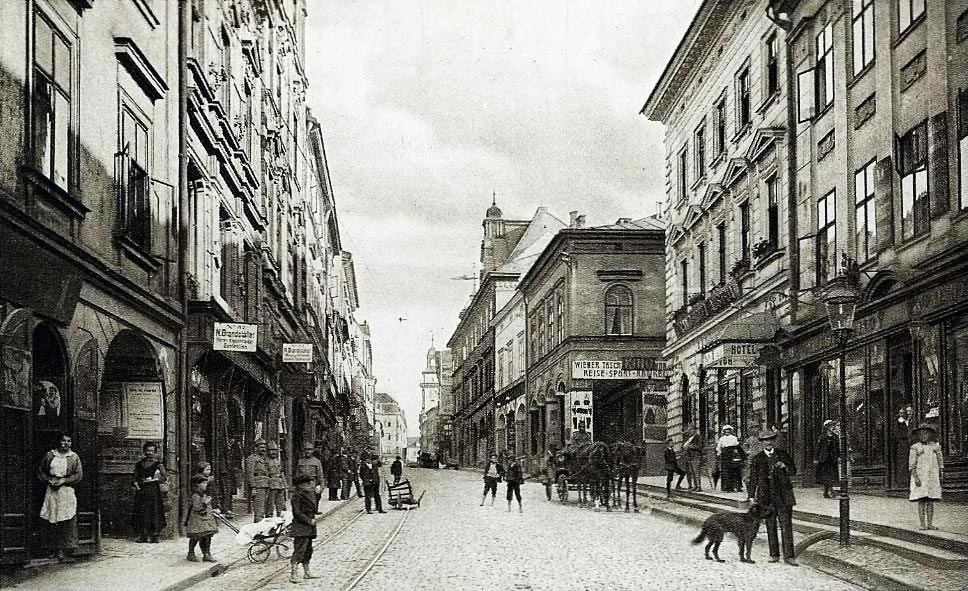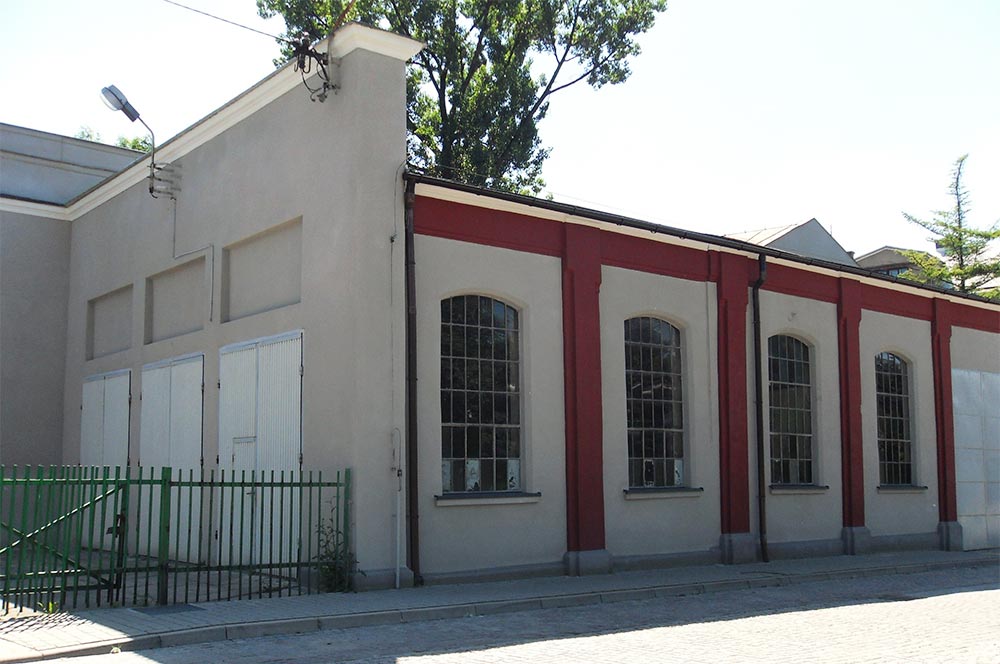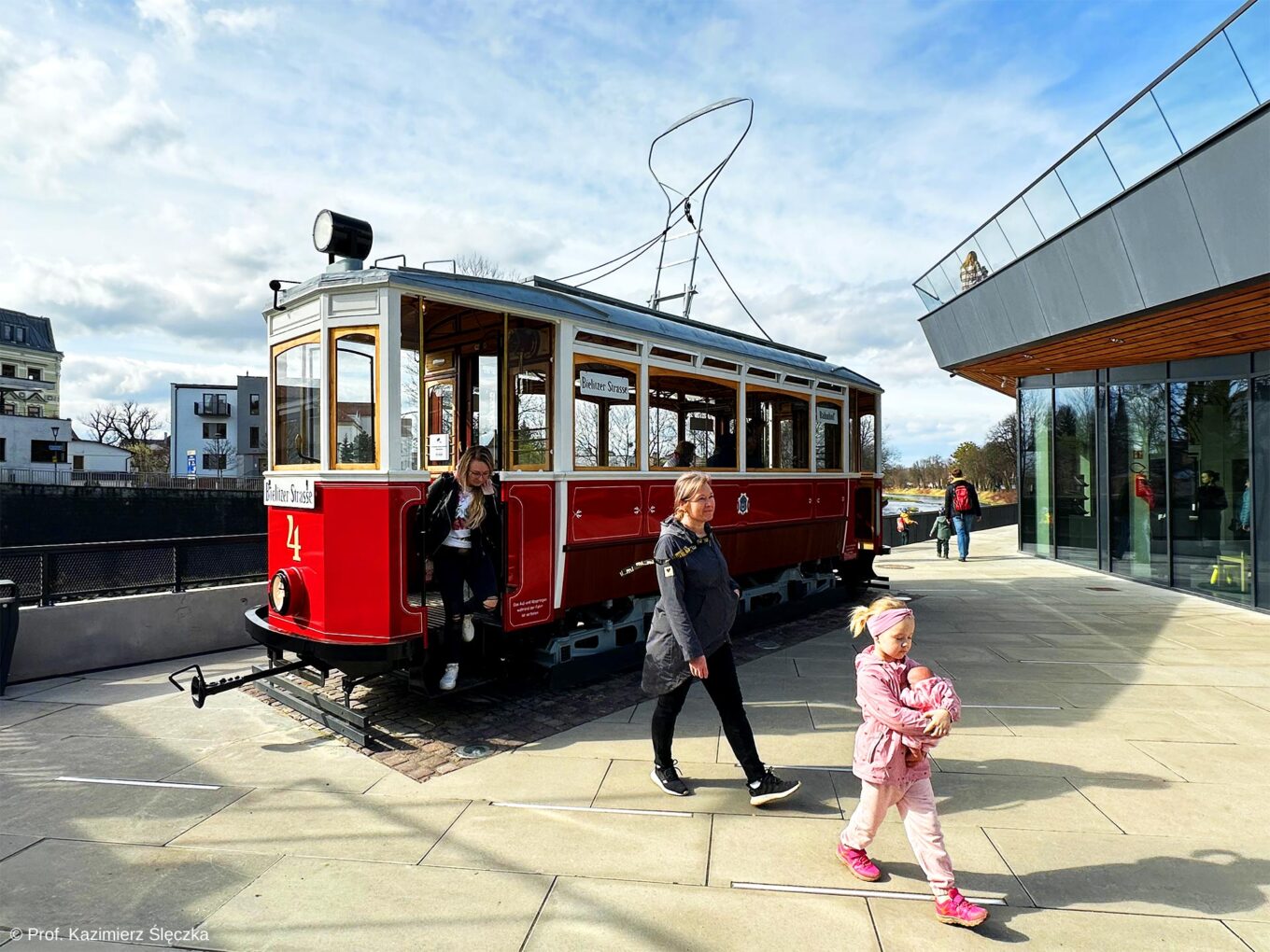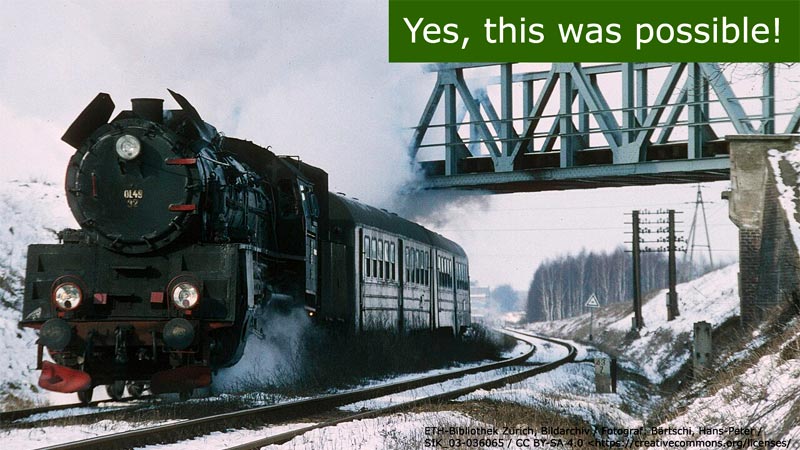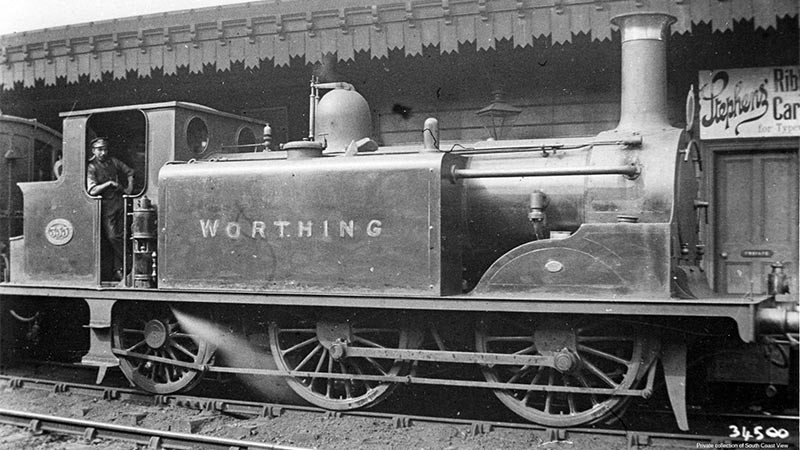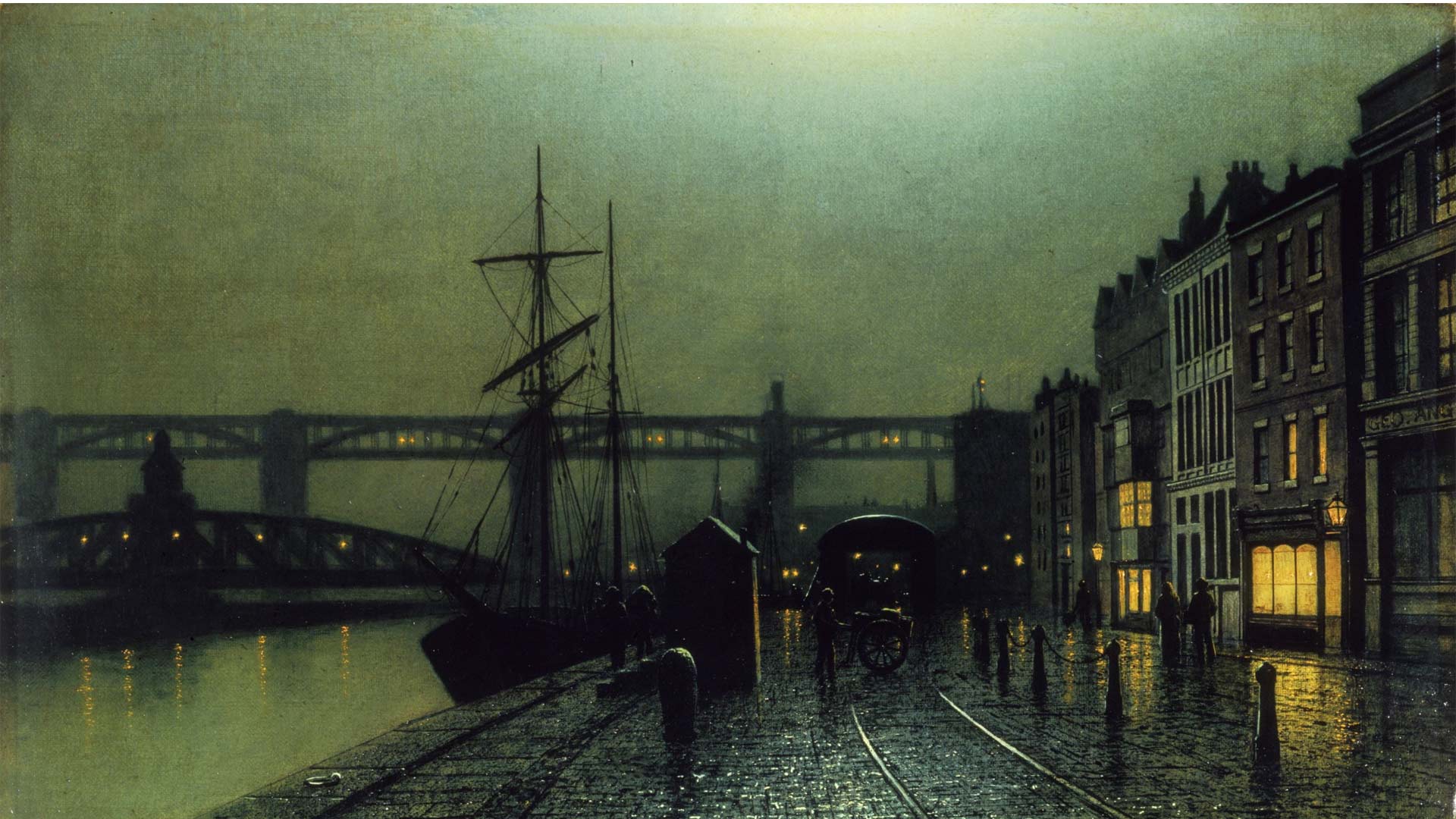Updated 5 March 2024. Reasons for update: Added the photograph above of a replica tram that used to run on this route. To the right is the Cross-Border Information office for Cieszyn and Těšín. The location is in Cieszyn, Poland. Photo: © Prof. Kazimierz Ślęczka. Added more photographs of the replica tram in Cieszyn.

Stefaniestrasse in Teschen. Today Głęboka Street in Polish Cieszyn.
This article is about the trams that used to run in Teschen and later on, on a cross-border basis between divided Polish Cieszyn and Czech Těšín.
Trams in Cieszyn and Těšín – Short Historical Background
Following the end of World War I and the consequential fall of the Austro-Hungarian empire, the territory of Cieszyn Silesia and Czech Silesia came into dispute, as it straddled the ethnically divided Czech and Polish areas of the newly independent nations of Czechoslovakia and Poland.
Teschen under the Austro-Hungarian Empire
We now go back to the time when Cieszyn (as referred to by Poles) and Těšín (as referred to by Czechs), were officially known by their German name of Teschen since the region was in the Austro-Hungarian Empire.
You can click on or touch any of the photographs below to see a bigger image.
The first trams in Cieszyn and Těšín start operating
In 1909 the town administration of Teschen decided to build a tramway that would connect the railway station to the town centre. Works started in 1910, and the tramway commenced operation on 12th February 1911.
This postcard from 1917 shows a tram, to the right in the photo, on approach to the railway station in Teschen. Today Těšín in the Czech Republic.
This photograph shows a tram on Stefaniestrasse in Teschen. Today Głęboka street in Cieszyn, Poland.
Photo attribution: Wikimedia Commons and listed as probably in the public domain.
The Tramway in Teschen
The tramway system was 1793 metres long with 11 stops on the route. The narrow 1000mm gauge tracks were laid out as a single-track tramway throughout the route. There was one tram shed in Poland, and the building still survives today.
As the trams were bidirectional, there was no need to construct a loop at either end of the system. There was one passing loop in the town square and another directly to the south west of the River Olza bridge.
Images of the Trams in Cieszyn and Těšín

The bridge over the River Olza marks one of the post-1920 borders between Czechoslovakia and Poland.
The Tam Cars
There were four tram cars manufactured by Ringhoffer in Prague. One of these cars was a spare unit. The colour scheme was red and white, as was common in most towns of the Austro-Hungarian Empire.
Passengers would enter the bidirectional tram on either side via a step leading to an open platform, covered only from the front and rear by a window. This open area, which contained the operating console, was also used by the driver to operate the tram. There was a manually operated sliding door that led to a corridor with seats on either side, consisting of wooden benches laid out as two-seat wide benches on one side and a single bench on the other side. For the driver, the conditions during the cold winters would have been very difficult.
In 1920, following the division of Cieszyn into Polish Cieszyn Polski Cieszyn and Czech Cieszyn Český Těšín, the trams continued running for a short time, on a cross-border basis between the divided town of the two nations.
In the same year, the trams were repainted green. In this way, the visual link to the former Austro-Hungarian occupiers was gone. The green colour presumably also achieved a neutral look to their Czech and Polish passengers.
The border controls resulted in tramway timetable chaos
The trams now had to go through border controls, where the tracks passed between the divided towns.
The border controls for the trams in Cieszyn and Těšín were on the bridge above the River Olza. These border controls were very strict, as both passenger documents and the tram chassis underwent examination. The controls resulted in the tramway operator being unable to keep to the timetable.
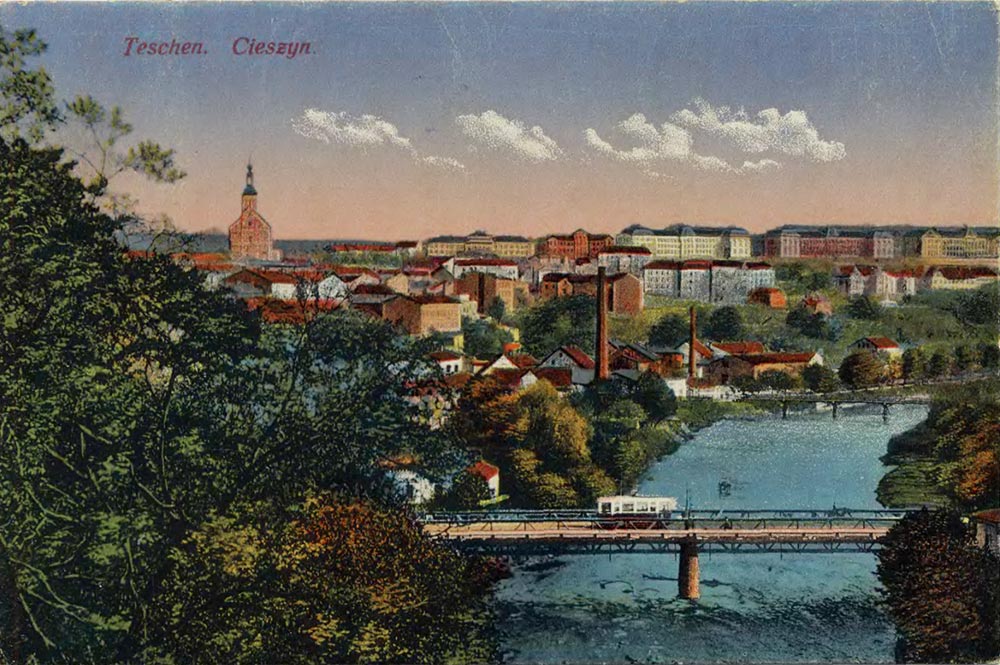
Image archived at the Silesian Digital Library
Suspension of the tram service
Due to delays on the tramway but also due to the rise in ticket prices due to post-war inflation, it was decided to temporarily cease operation of the system. This occurred on 2nd April 1921. There is anecdotal evidence from one of the last tram drivers, that there was one final farewell journey after 2nd April 1921.
The trams were retired to the tramway depot in Polish Cieszyn, never to be seen again on the streets, on either side of the border.
The photograph is from about 1928, long after the trams stopped operating.
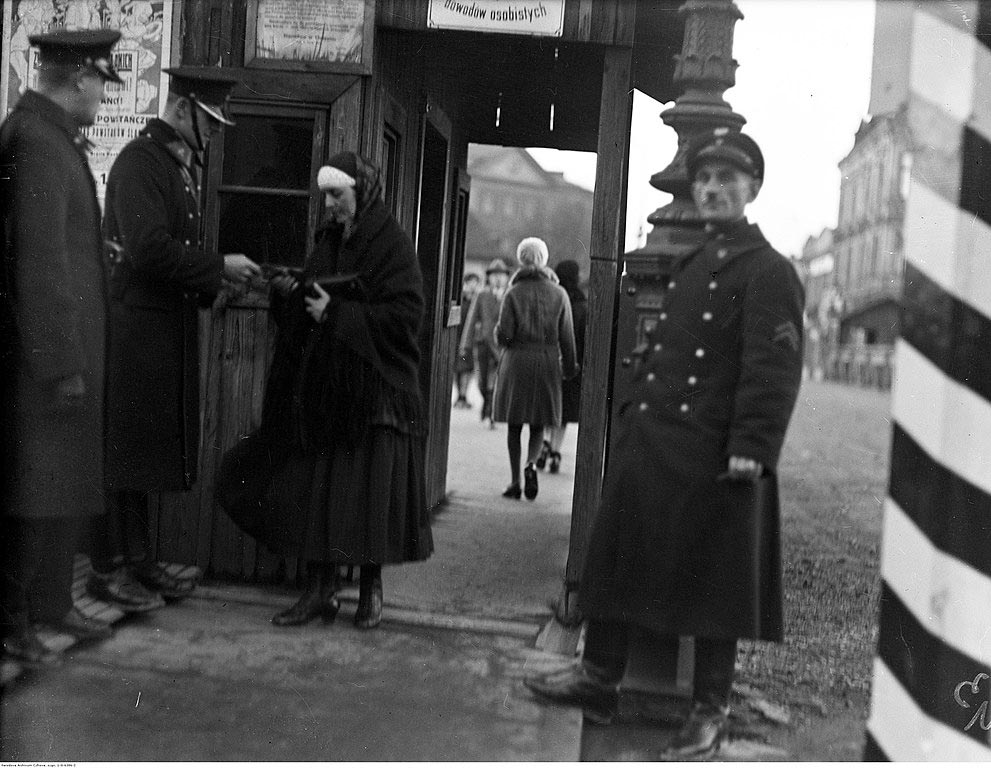
Image archived at the Audio Digital Archive NAC
In 1921 part of the rolling stock was sold to the close-by Polish city of Bielsko-Biała, while some was sold further afield to the Polish city of Łódź. The tramway tracks and electric traction was removed by 1923.
Legacy of the Cieszyn Trams
There are just a few reminders of the trams in Cieszyn and Těšín.
YouTube clip of the trams on the bridge above the River Olza.
Watch a short YouTube clip of a tram on the bridge above the River Olza. Filmed in 1919. As far as I know, this is the only existing film of a tram in Cieszyn.

Watch the YouTube video about the history of trams in Cieszyn, produced by the Museum of Cieszyn Silesia in Poland.
*The naked live wires that provide power to trams are supported by cross-street wires, which are secured in place by rosettes.
Trams in Cieszyn – A little more legacy returns
Sources and Links
Trams in Cieszyn at the Museum of Cieszyn Silesia in Poland
Trams in Cieszyn at Wikipedia (in Polish)
If you notice any errors in this article, please contact me. You can write to me in English or Polish.
Comments are welcome. Leave a comment below
Subscribe to future posts by email. No spam, just an email when a new post is published.

